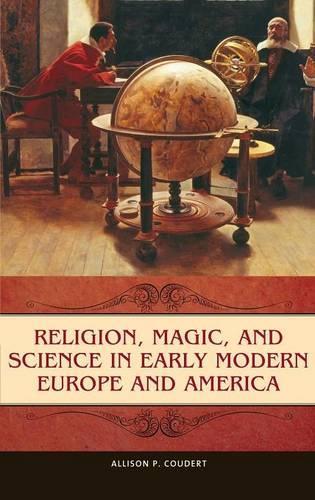
Religion, Magic, and Science in Early Modern Europe and America
(Hardback)
Publishing Details
Religion, Magic, and Science in Early Modern Europe and America
By (Author) Allison P. Coudert
Bloomsbury Publishing PLC
Praeger Publishers Inc
17th October 2011
United States
Classifications
General
Non Fiction
History of ideas
Religion and science
History of science
940.2
Physical Properties
Hardback
324
Width 156mm, Height 235mm
907g
Description
This fascinating study looks at how the seemingly incompatible forces of science, magic, and religion came together in the 15th, 16th, and 17th centuries to form the foundations of modern culture. As Religion, Magic, and Science in Early Modern Europe and America makes clear, the early modern period was one of stark contrasts: witch burnings and the brilliant mathematical physics of Isaac Newton; John Locke's plea for tolerance and the palpable lack of it; the richness of intellectual and artistic life, and the poverty of material existence for all but a tiny percentage of the population. Yet, for all the poverty, insecurity, and superstition, the period produced a stunning galaxy of writers, artists, philosophers, and scientists. This book looks at the conditions that fomented the emergence of such outstanding talent, innovation, and invention in the period 1450 to 1800. It examines the interaction between religion, magic, and science during that time, the impossibility of clearly differentiating between the three, and the impact of these forces on the geniuses who laid the foundation for modern science and culture.
Author Bio
Allison P. Coudert, PhD, is the Paul A. and Marie Castelfranco Endowed Chair in the History of Christianity in the Religious Studies Program at the University of California, Davis, CA.
